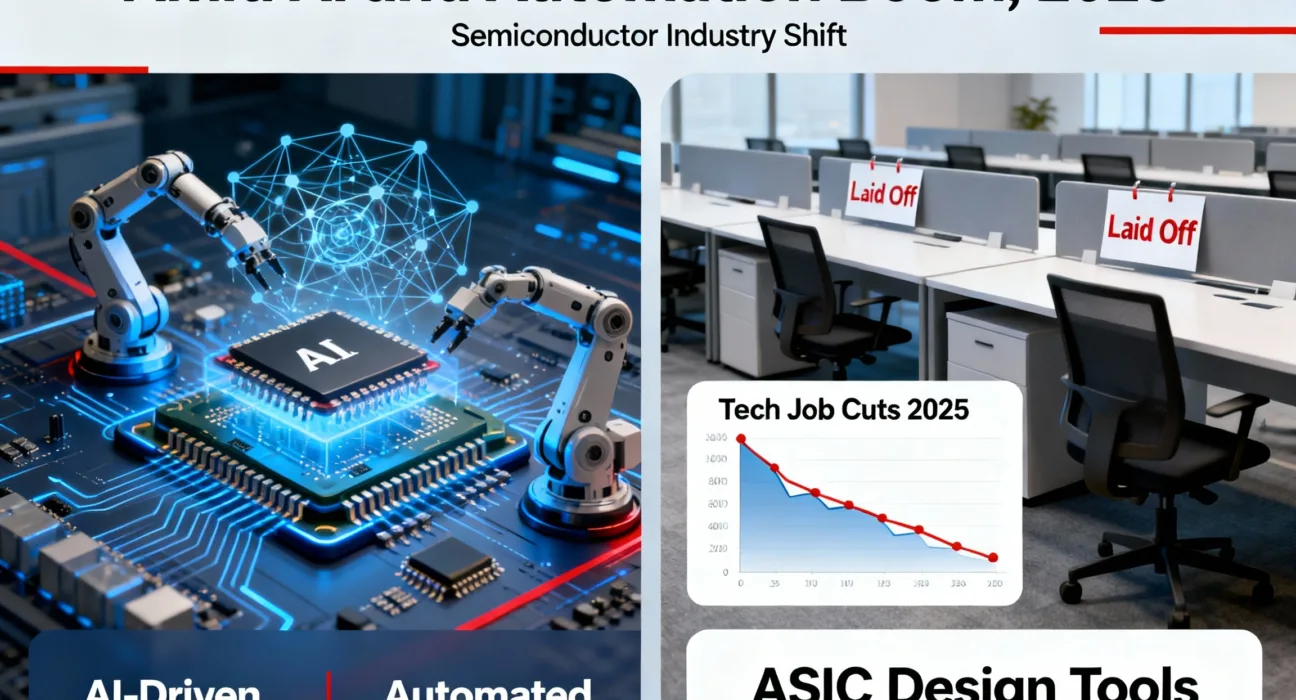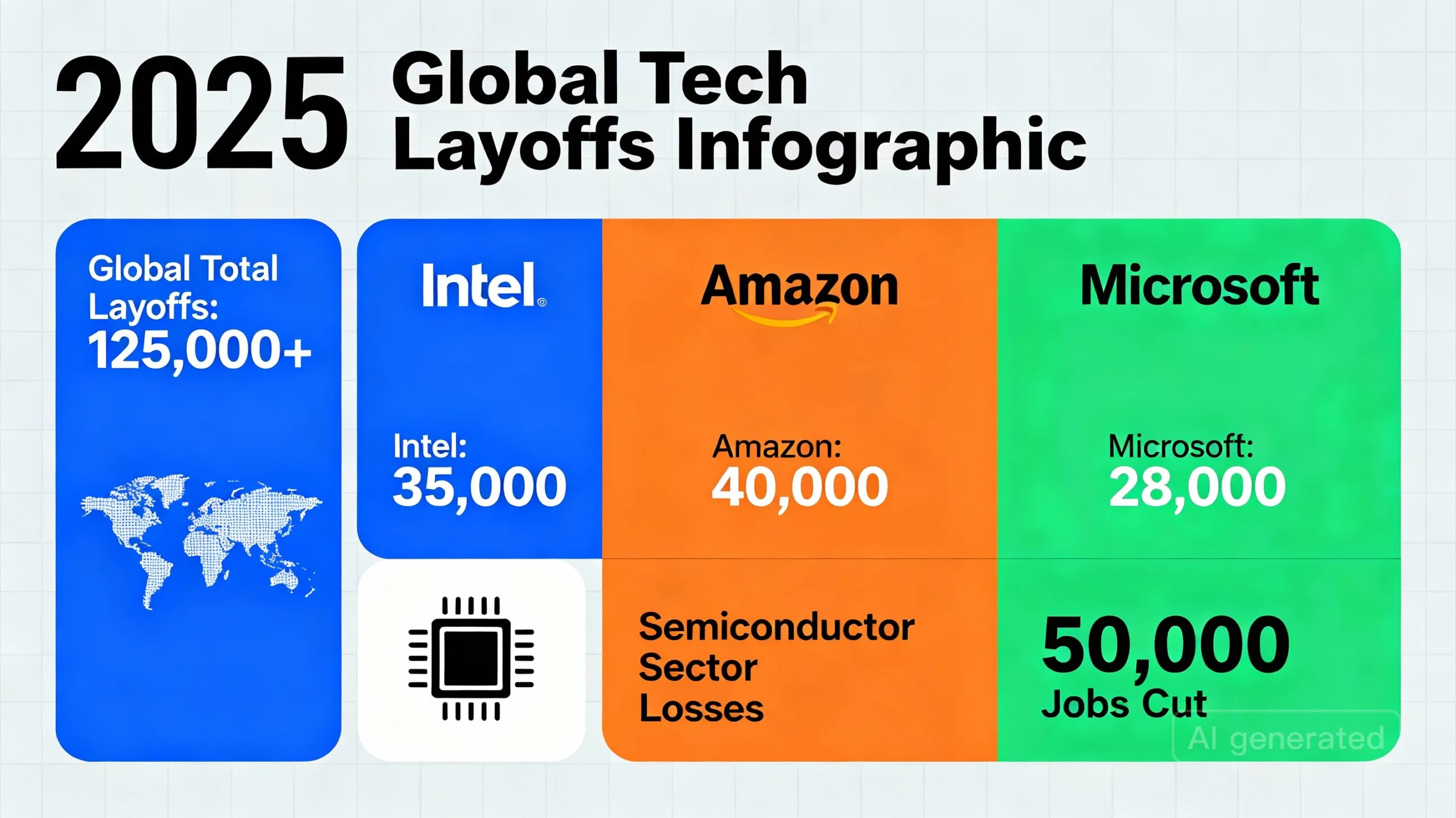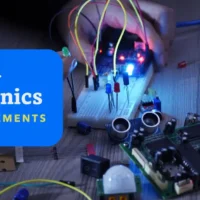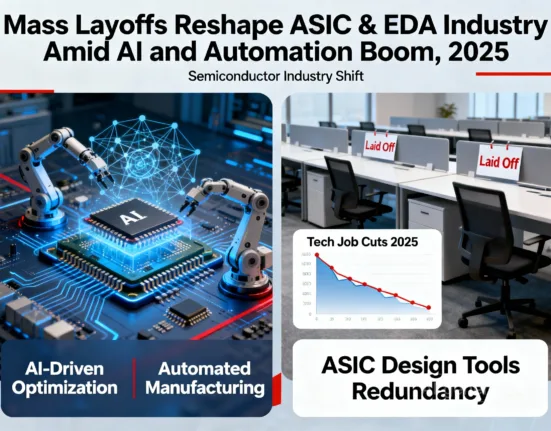Mass Layoffs Reshape ASIC & EDA Industry Amid AI and Automation Boom
- by Abhinav Kumar
- 10 November 2025
- 2 minutes read

Key Insights
- Mass layoffs in the ASIC and EDA sectors are impacting high-skilled engineering roles once considered secure.
- Automation and AI adoption is accelerating workforce reductions, even in specialized chip design and verification jobs.
- Industry consolidation and shifting capital expenditures are driving structural changes in semiconductor employment.
The semiconductor industry is facing a wave of mass layoffs that are reshaping the landscape for Application-Specific Integrated Circuit (ASIC) and Electronic Design Automation (EDA) professionals. Once considered a haven for highly skilled engineers, recent cuts at major companies like Siemens EDA, Synopsys, Intel, and others have disrupted the status quo, raising questions about the future of ASIC development and the broader tech workforce.
The Scale of Semiconductor Layoffs in 2025

In 2025, the tech sector has experienced over 202,000 layoffs globally, with projections suggesting this figure could surpass 244,000 by year-end. Semiconductor giants are leading the downsizing: Intel alone plans to reduce its headcount by 31%, cutting nearly 33,900 jobs this year as it continues to report multi-billion dollar losses and undergo executive leadership changes. Amazon and Microsoft have also announced significant layoffs, with Amazon cutting 14,000 jobs and Microsoft letting go of roughly 19,000 employees, many of whom were in senior and engineering positions. These reductions are not limited to underperforming units; high-skilled design, verification, and EDA support roles are being affected, reflecting a fundamental shift in industry priorities.
Why Are Once-Safe ASIC and EDA Jobs at Risk?
Several converging factors explain the current upheaval:
- Over-Hiring During Chip Boom: Between 2021 and 2023, companies accelerated hiring to meet surging chip demand from data centers, automotive, AI accelerators, and telecom. As demand cooled and supply chains stabilized, many firms found themselves overstaffed.
- Macroeconomic Slowdown: Foundries and OEMs are cutting future capital expenditures, responding to economic uncertainty and high interest rates. Investor confidence has declined, and companies are prioritizing cost-cutting to weather market volatility.
- AI-Driven Industry Consolidation: The rise of AI ASICs is consolidating design work among fewer, larger players, reducing diversity in chip development projects.
- Automation in EDA Tools: EDA software is increasingly automating tasks that previously required human expertise, leading to fewer roles for engineers and verification specialists.
Despite a global talent shortage in chip design, the pace of automation and AI integration is making even specialized skillsets vulnerable to redundancy. Companies are shifting hiring priorities toward AI development and automation expertise, raising the bar for job security in the field.
Emerging Trends and What’s Next for ASIC Professionals
As the industry recalibrates, several key trends are emerging:
- Reskilling and Redeployment: While some executives advocate for workforce redeployment, others argue that retraining alone cannot offset the impact of automation. Engineers may need to acquire new competencies in AI and system-level design to remain competitive.
- Long-Term Structural Shift: Experts suggest that the current layoffs are not merely a post-COVID correction but indicate a long-term structural change. The increasing reliance on automation and AI is transforming job requirements and reducing the need for traditional design and verification roles.
- Industry Opportunities: Despite downsizing, opportunities remain in emerging fields such as AI hardware, automotive chips, and telecom infrastructure. Engineers willing to adapt may find new avenues for growth in these sectors.
A table or graph illustrating the year-over-year layoffs across major semiconductor companies would provide valuable context for understanding the scale and pace of change.
The semiconductor workforce is entering a period of rapid transformation, and the future will favor those who can pivot toward automation, AI, and interdisciplinary skills. Staying agile and informed will be critical for professionals navigating this evolving landscape.
Discover more from WireUnwired Research
Subscribe to get the latest posts sent to your email.








